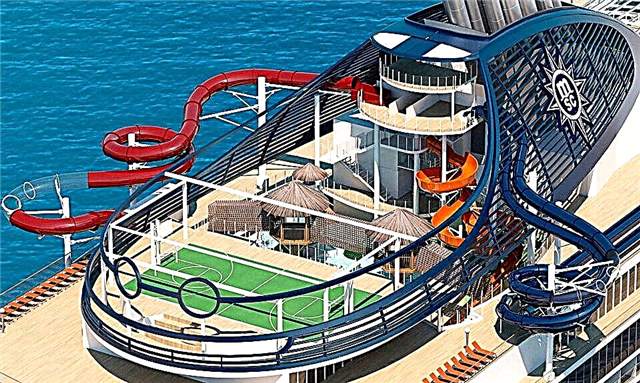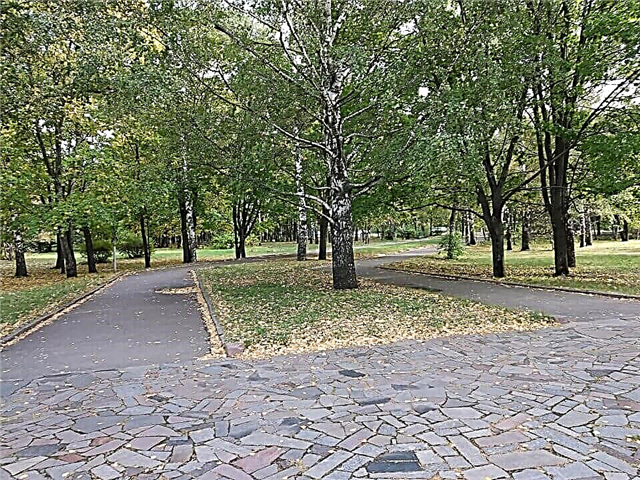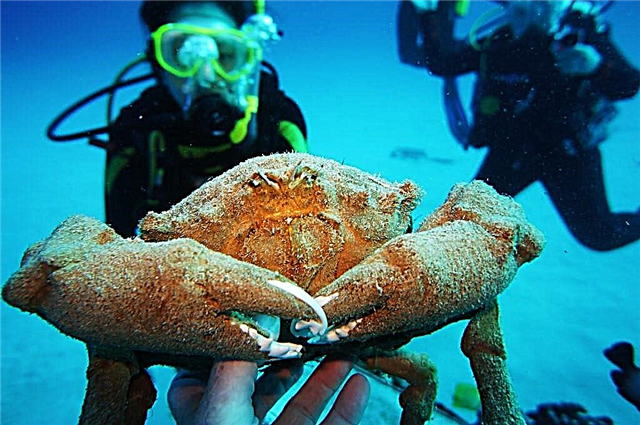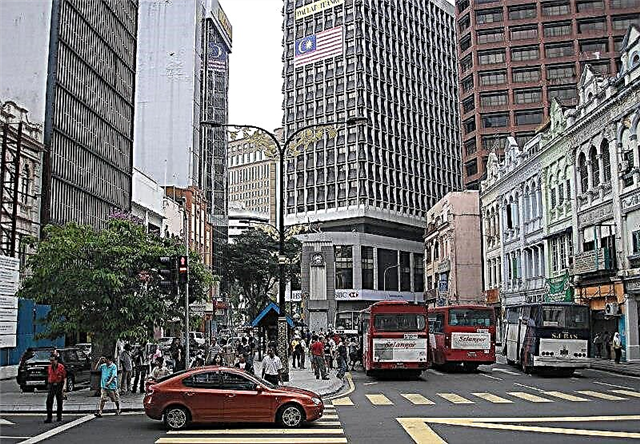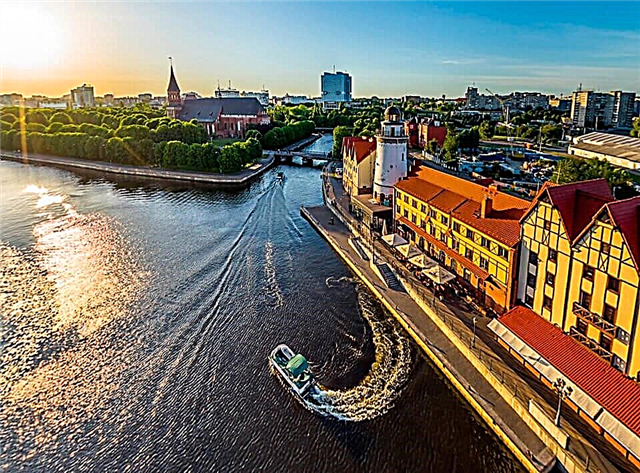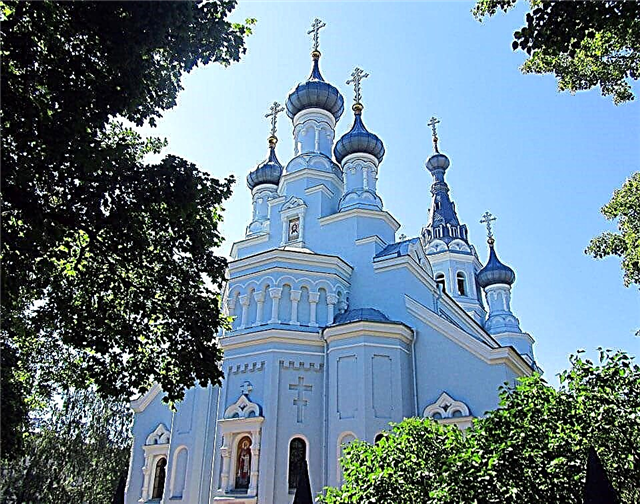The sights of Kronstadt deserve to be explored. This city has military traditions that are sacredly observed today. Until recently, it was impossible to get to Kronstadt without a special pass, the city lived a special life, closed from outsiders. And now anyone can see the historical monuments. And you can get here not only by sea, but also by the ring road, which is more convenient.
Naval Nikolsky Cathedral

This temple was the main cathedral of the sailors of the Russian Empire. It was consecrated in 1913 in the presence of the family of Emperor Nicholas II.
And the history of this temple is full of tragic twists and turns:
- It was obvious that a naval cathedral should be built in Kronstadt. And the issue of this was decided at the highest level back in the 30s of the 19th century. But construction was postponed.
- In 1897, Vice-Admiral Kosyakov submitted a petition to the Highest Name, where he offered to collect funds for the construction of the cathedral by subscription. Nikolai approves the subscription.
- A place for the building has been allocated at Anchor Square, previously cluttered with old anchors.
- A number of requirements were presented to the project. First, the height of the cathedral should be such that the ships approaching Kronstadt would be guided by the domes. Secondly, the cross must be such that the sailors pay attention to it first. Architect Kosyakov presented a project that exactly meets the conditions.
- Construction began in 1902. Previously, John of Kronstadt serves a prayer service.
- In 1903, in the presence of the emperor, the foundation stone of the cathedral was laid.
- From 1913 to 1927, regular services were held in the temple. But in 1927 the cathedral was closed, the interior was plundered, domes and crosses were thrown off. The unique black-and-white tile, on which the names of sailors and priests who died in battles, who served on ships and who also died, were engraved, was removed and put into service.
- Until 2002, the Naval Cathedral housed a club, a cinema, and a concert hall. The room was redesigned, which is why it was on the verge of destruction. Reconstruction saved the day.
- The great consecration of the cathedral took place in 2013. And regular services began after the small consecration, in 2012.
Some of the relics were saved by sailors and parishioners during the plundering of the cathedral. Now these items (after the restoration) have been returned to the temple again.
We recommend reading what to see in St. Petersburg:
Cast iron pavement

Such a coating on the territory of Russia is found only in Kronstadt. And it owes its appearance to the manager of the Steamship Plant. After the construction of the enterprise was completed, the manager was seconded to America to study the steamship business.
And it was there that he drew attention to the fact that part of the pavement in New York was made of cast-iron checkers. Moreover, the coating was highly durable. The engineer studied the technology patented by Knapp and decided to pave part of the factory yard upon arrival.
The idea was liked by the curator of the enterprise, Grand Duke Konstantin Nikolaevich. And after the test period (cold winter of 1860-1861 with sudden long thaws), the streets of the city began to be actively paved. Moreover, the checkers were cast at the Steamship Plant by local foundry workers.
The process was quite expensive, but the pavement had a long service life, and the maintenance of the pavement was reduced only to adding rubble instead of the one that had sucked in the swampy soil. The streets had such a pavement until September 1941.
The Defense Committee ordered the Leningrad factories to cast 1,000,000 mine corps, and Kronstadt was obliged to produce 70,000 units. But the supply of raw materials has already begun to be interrupted. Therefore, it was decided to disassemble the cast-iron pavements.
The task was completed on time, and the remaining pieces were dismantled for the manufacture of defense products in subsequent years. And now cast-iron lace can be seen in two places: on Oktyabrskaya Street near the Penkovy Bridge and on Anchor Square near the Admiralty.
Blue bridge

In 1794, when the building was finally completed, the railings delighted passers-by with a rich green color. The bridge was built by the merchant Bekrenev. The structure had a wooden flooring. Breeding was carried out using a chain mechanism.
Then the bridge was called New or Customs. And in 1874 the military engineer Petrovsky proposed to reconstruct the structure. He replaced the swing mechanism with a swivel mechanism, added walkways on both sides of the roadway.
These were revolutionary solutions in bridge building. The next reconstruction was carried out in the 60s of the twentieth century. The flooring was made of reinforced concrete, the swing mechanism was removed, and the railings were painted blue.
Today the bridge connects the two banks of the Obvodny Canal, cars and pedestrians pass along it. But connecting the banks is not the only task of the construction. A tide rod is fixed on the Blue Bridge, by the level of which all the depths and heights of Russia are measured.
The footstock was installed in 1840. There is also a tide gauge in the turret that records changes in sea level. Collecting data using a tide gauge began in 1898.
The floods of St. Petersburg are a tragic page in the history of the city. And on the Blue Bridge there is a bronze plaque on which two numbers are engraved: 3, 67 (m) and 1824 (year). The water has risen to this level.
Makarovsky bridge

During Soviet times, the building was called Red, but the people of the bridge retained its original name. It was built specially for the time of the consecration of St. Nicholas Cathedral in Kronstadt so that the emperor arriving for the ceremony would not bypass the ravine that blocks him.
The bridge was assembled in 1913 at a local shipyard in just 3 months. Its design looked so light and airy that Nikolai refused to step on it.
Then one of the officers was the first to cross the ravine (and received the order from the hands of the emperor for resourcefulness and courage). And during the tragic events of 1917, the bridge literally turned red. The insurgent sailors threw from it into the ravine the bodies of the executed officers who refused to recognize the Provisional Government. And from the bridge, those who wished could watch the terrible procedure.
Monument to the blockade stickleback

Even cats reluctantly ate this inconspicuous fish in peacetime. And who will catch a tiny fish weighing 2-3 g and with spines on the dorsal fin? There are enough tasty fish in the Neva and the Gulf of Finland! But it was this trifle that saved many Leningraders during the blockade winter, when all the commercial fish became scarcely available for the residents of the city.
And the inconspicuous baby continued to frolic in the shallow water. It turned out that stickleback is rich in carotene, fatty acids and protein. She was caught with the help of fabric (shirts, T-shirts, knotted), because she escaped from the net, even with a small mesh. From the catch, women prepared cutlets, which they fried sticklebacks in fat (and the fish supplied the hungry Leningraders with this component).
By the way, there was no need to clean it, it was enough to remove the bubble. Red cutlets not only saturated, but also supplied the weakened organisms of the blockade with the necessary elements. The monument to the fish was installed on the wall of the Obvodny Canal in 2005. It depicts three sticklebacks, which were raised by a wave. Residents of St. Petersburg bring fresh flowers to the monument on the day the blockade was lifted.
Monument to Admiral Makarov

Stepan Makarov is a remarkable naval commander, explorer of the Russian North, oceanographer, inventor, shipbuilder. He died in 1904, at the same time it was decided to erect a monument in Kronstadt. But the opening took place only in 1913 (almost simultaneously with the Naval Cathedral). The author of the project is Leonid Sherwood.
As a pedestal, the architect used a stone that was intended for a monument to Emperor Paul. This block was transported from the Finnish province and sank near the city. During the ascent, the stone burst, and Sherwood immediately used this feature.
The author depicted the admiral standing on top of a marble pedestal, and a dragon is creeping up to him from below. The reptile is trying to drag Makarov to the bottom. The words “Remember the war” are engraved on the monument. This is the admiral's motto.
In addition, the architect depicted the most important moments in Makarov's life:
- icebreaker Ermak (the first in the world), which was designed and built by the admiral;
- a fragment of the Russian-Turkish war, when Lieutenant Makarov successfully torpedoed an enemy ship for the first time;
- the death of the battleship Petropavlovsk.
The admiral's widow was present at the opening of the monument. Today graduates come to him - naval officers.
Petrovsky park

Until 1839, there was a swamp on the site of Petrovsky Park. The earth was poured into it, which was taken out during the construction of the dock. At the end of the work, the soil was leveled and tamped. And later, on this place, by order of Bellingshausen, they arranged a garden.
A monument to Peter I was erected on the central alley in 1841, and the final planning of the territory was completed in 1846. It is noteworthy that this is how tourists see the park even today, changes made later are insignificant. Initially, the favorite place for relaxation and walking was equally accessible to all comers.
But in the 19th century, the park was divided into 2 zones: the right side was visited by poor townspeople, the left - by the rich. And at the entrance there were watchmen who did not allow the poor to enter the recreation area of rich citizens. There are no entertainment attractions, cafes and restaurants in the park.
But here you can see the anchors of the ships that landed at Peterhof during the Great Patriotic War, an old cannon. And century-old trees form shady alleys, protected from the harsh Baltic wind.
Summer garden

This park is the oldest in Kronstadt. And its central alley is at the same time the main street of the city. This is exactly how the St. Petersburg Summer Garden is planned. There was once Peter's house in the park, but it has not survived. And the garden was a favorite place for rest and walks of the townspeople. But a strong flood in 1824 severely destroyed the avenues of the monuments.
In 1828, a decision was made about a large-scale reconstruction. It was assigned to the architect Charlemagne. Before the October Revolution, the Summer Garden was constantly renewed. So, the famous openwork gratings, cast at the local Steamship Plant, were installed in 1873. The alleys were cleared and improved.
The park has been launched today. Still, you should definitely see:
- a monument to midshipman Domashenko, who died saving a drowning sailor;
- a granite slab promising to erect a monument to Rear Admiral of the Russian Navy, John Paul Jones;
- a monument to the clipper sailors Oprichnik, missing in the Indian Ocean;
- grotto;
- a granite staircase, along which oaks are planted (one of them was planted by Admiral Makarov)
- Dock pool, which is part of the water system of the Petrovsky dock.
All these monuments are located near the main alley of the park.
Fort "Grand Duke Constantine"

Fort "Grand Duke Constantine" is included in the UNESCO cultural heritage list. Today the fortress has lost its strategic importance, but it attracts tourists with its preserved fortifications. The location of the fort ideally blocks the fairway. And when in 1808 a conflict with England became possible, a battery of 45 guns was installed here. But the flood of 1824 washed away the cannons, so the construction of stone structures began.
The fortress received its name in 1834: Emperor Nicholas I ordered the fort to be named after his son Constantine. By the mid-50s of the 10th century, the structure had become absolutely impregnable: its guns had telescopic sights, and the reloading speed was minimal.
The pillboxes were planned in such a way that the shooting could be conducted even when the enemy penetrated into the fort. During the First World War, the October coup and the civil war, the fortress practically did not participate in battles.
But in World War II, the garrison held the defensive against the Nazis, using pillboxes set up more than 100 years ago! In the 60s of the twentieth century, the fort was disarmed and plundered. The buildings began to collapse. But at the beginning of the 21st century, it was transferred to a private company, which restored the surviving premises. Now there are excursions and a yacht club. The owners are doing everything to preserve this miracle of military engineering for posterity.
Italian palace

The author of the project is the German architect Johann Braunstein, and the palace was named Italian because it was built by masters from Italy. The customer of the construction is Alexander Danilovich Menshikov. He had several such (Italian) palaces. The first building was erected in 1724.
The magnificent building not only organically blended into the ensemble of the city, which was the gateway to the new capital, but also favorably emphasized the beauty of St. Petersburg. It was the largest building of that time.
But after a few years, the building began to change owners:
- After 1737, the year Menshikov's disgrace began, the palace became the property of the treasury, and then transferred to the Naval Ministry.
- In 1771, the Naval Cadet Corps was housed in the Italian Palace.
- In 1798, the Navigation School was located here, and then - the Navigation half-crew.
- In the 40s of the 19th century, Nicholas I ordered to rebuild the building. Now in the center was a tower with an observatory.
- In 1896, the palace housed the Naval Engineering School of Emperor Nicholas I.
- In the 19020s of the twentieth century, the palace was badly damaged and then reconstructed.
- The last restructuring was carried out in the 80s of the twentieth century.
After all the alterations, the historical appearance of the Italian palace has been lost.
Gostiny Dvor

Already during the planning of Kronstadt, extensive shopping arcades were envisaged. And this is not surprising: many people came through the sea gates of St. Petersburg, among them merchants wishing to trade with Russia. The first shops were built of wood, only some of the pavilions had stone walls. In 1827, at the direction of Nicholas I, the reconstruction of the territory began.
This market completely repeated the look of Gostiny Dvor in St. Petersburg. The building was restored several times during the Soviet era. And at the beginning of the 21st century, it was on the verge of destruction: in some places the roof collapsed, there were no windows and a roof. It was only in 2007 that the building was restored to its historical appearance. Now it is a modern shopping center.
Cathedral of the Vladimir Icon of the Mother of God

A garrison wooden church was built on the site of the modern cathedral in 1730. It was rebuilt several times, collecting funds by subscription. During a fire in 1874, it burned down. It was decided to build a stone temple at this place.
Work began in 1876 under the direction of architects Grimm and Grefan. The construction was carried out with funds allocated from the state treasury. The new temple was supposed to become more spacious, so the land adjacent to the church was bought. In 1902, the garrison church received the status of a cathedral.
In 1931 (the period of theomachy) the temple was closed and plundered. During the Patriotic War, the building was damaged, and in the 50s they wanted to destroy it.
But due to the dense building, it was not possible to do this: cracks appeared in the neighboring houses from directed explosions. In 1990, the cathedral was returned to the Russian Orthodox Church: restoration began. The surviving shrines were returned, the painting of the walls and ceiling was restored. 3000 parishioners can pray in the cathedral at the same time.
Maritime museum

This is a completely new exposition: it has been operating since 2012. The opening took place on a holiday, Diver's Day, May 4. The center was organized by investors who are not indifferent to the history of Russia.
Exhibition goals:
- study of the history of the country, the exploits of sailors
- acquaintance with rare documents
- study of unique technologies and developments
- awakening of young people interest in independent creativity
The organizers use interactive technologies, so there is no time to get bored in the halls. The visit is possible with a guided tour or individually.
Museum of the history of Kronstadt

The exposition is located in 2 separate buildings: a museum (Anchor Square) and a water tower (Leningradskaya Street). There is no larger exposition in the city.
Permanent exhibitions introduce guests to:
- The history of shipbuilding in Russia
- Ships built and armed in Kronstadt that carried out heroic raids
- Events of 1905-1907 in the city
- October coup d'etat of 1917
- The tragic pages of the Kronstadt uprising in 1921
- The blockade and heroic defense of Leningrad in the Great Patriotic War
- Urban traditions
In a separate room, items raised from ships sunk in the Gulf of Finland are exhibited. The administration of the center also organizes thematic exhibitions on topics close to the life of a modern city.
Petrovsky dock

The idea of creating the dock belonged to Emperor Peter the Great. He wished that the ships of the Russian fleet were repaired in Kronstadt. In this case, repairs should be carried out as soon as possible. Peter even proposed his own dock design: the water was drained into the lower basin in just a day, while foreign docks were drained in a month. It was an innovative engineering solution. Work began in 1719, but slowed down after the death of the emperor.
They only managed to dig a canal and strengthen the walls. The canal was opened already under Elizaveta Petrovna in 1752. In 1974, a steam engine was installed at the dock, with the help of which water was pumped out in 9 days. At the same time, repairs were carried out on 5 ships.
There was no such large-scale structure in Europe at that time. The area of the dock is now closed to visitors. Guests are shown only the canal gate. But the city authorities are planning to reconstruct the building and arrange an open-air exposition here.
Fort Kronslot

To defeat the Swedish army, which had a large number, it was required to create a powerful defensive fortification on the island of Kotlin. But it is impossible to carry out all the work in a year, so Pyotr Alekseevich decided to block the deeper southern channel.
Enemy ships were not supposed to break through to St. Petersburg. And on the southern coast of the island in the winter of 1703, the construction of the Kronshlot fort began. The technology was simple and time consuming at the same time. An ice-hole was made in the ice, into which the previously made ryazhs (knocked together huge boxes with stones and coarse sand) were lowered.
A fortress was then built on these piles. The king himself came up with the project. And Domenico Trezzini created a tower of three tiers, made of wood. It was named Kronshlot: Crown Castle. The fort was well fortified and armed. By order of the tsar, the most modern powerful cannons were installed there.
And the emperor's expectations were fully justified: in the summer of 1705, the Swedish squadron was unable to break through to the new capital, the enemy was blocked by the fort of Kronshlot. At the end of the 19th century, it ceased to be a strategically important object: ammunition was stored here.
But during the Great Patriotic War, guns were again placed in Kronshlot: the fort again defended the city. And in peacetime, ships were demagnetized here. Today it is included in the program of sightseeing tours. But there is no inspection with disembarkation. You can visit the fort yourself.
Museum-apartment of the Holy Righteous Father John of Kronstadt

John of Kronstadt is known not only as a priest and author of spiritual books, but also as a public figure. He was a supporter of the monarchy, believed that power was given to kings from God, and it was blasphemous to encroach on it.
Such convictions led to the fact that in Soviet Russia the memory of John was diligently erased. Back in 1918, 9 years after the death of the monk, Patriarch Tikhon gave his blessing to open a house church in the former apartment of Father John. This saved her from being plundered in 1917: the church was closed only in 1930.
In 1931 the building was turned into a communal apartment for 5 families. Only in 1995, caring citizens began to resettle the communal apartment in order to return the premises to the Church again. New apartments were bought with money from private investors.
Rostropovich took an active part in this. In 1999, an unusual museum was opened in the former apartment of John of Kronstadt. There is an exposition (in one room: a study, a bedroom and a cell) and Orthodox services are held at the same time.
Kronstadt fortress

According to Peter's plan, the path for enemies to the new capital was to be reliably blocked. And in 1723, after the construction of Kronshlot and the Merchant harbor, the Kronstadt fortress was laid. She became an absolutely impregnable structure and at the same time an ideal dock where ships could be repaired. The fortress was almost completely destroyed by the flood of 1824. But upon restoration, the new plan almost completely repeated the old one.
In 1921, an uprising took place in Kronstadt. The Bolsheviks launched an assault on the fortifications on the ice of the Gulf of Finland. The first assault was repulsed, and then most of the rebels left for Finland. The impregnable fortress was taken. Today, the surviving structures are protected by the state. There are guided tours around the territory, but you can explore the fortress yourself.
Kronstadt Admiralty

The idea to move the admiralty belonged to Catherine the Great. The reason was quite prosaic: the St. Petersburg Admiralty, which was located next to the Winter Palace, caught fire. In order to avoid the danger of transferring the fire to the royal residence in the future, the empress ordered to remove the department further away: to Kronstadt.
The work was planned to be large-scale. In addition to digging the Obvodny Canal, it was required to build:
- the building itself
- apartments for officers and barracks
- shops, warehouses
- plant for the production of ropes and their resin
- workshops for making sails
After the completion of the work, the admiralty with the services assigned to it occupied 25% of the city's territory. Today, the buildings are protected by the state, and the main building has been transferred to the Navy. It can only be viewed from the outside.
Lighthouse Service Museum

This is a new exhibition: it opened in 2017. The exhibition is located on the territory of the fort complex of the Grand Duke Constantine.
Guests are expected to get acquainted with:
- a Fresnel lens that has worked at the Seskar lighthouse for over 150 years
- lighting devices used in different years in Russia
- navigation charts
- sextants
- compasses
- chronometers
- star globe
The pride of the exhibition are the lanterns that marked the Road of Life on the ice of Lake Ladoga. In addition to visiting the permanent exhibition, the administration offers thematic trips to the Seskar, Tolbukhin, and Povorotny lighthouses.
Wooden lighthouse

The architects Braunstein and Minotti dreamed of building a lighthouse with three tiers. Vessels were to pass through a wide arch in the lower part, heading to the dry dock for repairs. But as a result, a stele-shaped lighthouse was built, crowning a long pier between the Kupecheskaya and Srednaya harbors.
Nevertheless, the object has been performing its duties since 1722 until now (although it is officially listed in the reserve). The lighthouse sends light over a distance of 30 km. And among tourists, this is a favorite place for photo shoots: next to the historical monument is the picturesque Petrovsky Canal.
Strange, but the unique object does not have a specific name: it is called the Lighthouse on Petrovskaya pier, Stvorny, Kronstadt. Today it is impossible to go inside the structure (the object is working), but it is quite possible to inspect it from the outside and take photographs.
Tolbukhin lighthouse

Emperor Pyotr Alekseevich ordered to build a lighthouse at the most extreme point of the Kotlinskaya Spit. Moreover, he drew a sketch on his own and indicated that it was certainly necessary to build from stone, and further decisions were to be made by the architect.But it was not possible to fully fulfill the tsar's will: there were not enough qualified masons.
Then Peter allowed to build a lighthouse from wood. The sailors were unhappy with the new structure: candles were used in the lanterns, their fire was dim and could not be seen from afar.
Therefore, already in 1723, the candles were replaced with hemp oil, and later (modeled on European lanterns) with wood and coal. After its construction, the lighthouse was called Kotlinsky. But in 1736 it was renamed Tolbukhin after the first commandant of Kronstadt, who defeated the Swedish landing in 1705. And yet, the idea to build a stone structure did not leave the military builders. In 1737, a second wooden lighthouse was erected, but with the expectation that a stone one would be built in its place later.
But this was done only in 1810. But the building met all modern standards, and even the conditions for employees at the lighthouse were excellent: the house was connected to the tower by a covered gallery. And the equipment was the most modern: the future Decembrist Bestuzhev, working at Tolbukhin, installed colored flashing lights, significantly increasing their visibility for ships.
Today you can explore Tolbukhin with a thematic or sightseeing tour.
Wish tree

This witty monument was presented to the townspeople for the anniversary of the city. It is located next to the Andreevsky Garden. The tree that grants wishes is cast from cast iron. It has a long nose and a huge ear that hears spoken desires.
In the upper part of the crown there is a nest: the tree must also fulfill duties, give shelter to birds. And wise owls are circling around the trunk, each of which drags one of the desires in its claws: love, health, success. A little deer is watching all the commotion.
In order for the conceived to come true, you need to take a five-ruble coin, wrap it with a piece of paper with a written desire, throw it into the nest (you must get it). Then you should jump on the fawn and grab it by the nose. Employees of the Andreevsky Garden claim that wishes come true: otherwise why do they so often have to clear the nest of coins ?!
Zapadny Kotlin Wildlife Refuge

The reserve is located on the westernmost promontory of Kotlin Island. This cape cuts deeply into the Gulf of Finland. From 1942 to the end of the twentieth century, the entire island was considered a closed object, so interference with the environment was minimal.
In 2012, a nature reserve was formed on the cape. It consists of natural attractions and cultural heritage sites. Rare species of birds live on the territory of the park (opolovnik), there are plants listed in the Red Book of Russia (aspen forests-epiphytes).
The forts Rif, Obruchev, Shanets, located on its territory, are included in the park from cultural heritage sites. They are protected by the state, the moats, which previously served to protect against the enemy, have now become artificial ponds. A distinctive feature of the territory is that the coastal area is constantly changing. The reason for this is the activity of the sea and the low-lying landscape.
In general, artificial heights are much higher here than artificial ones. The beaches are deserted and very picturesque. Where the waves wash up the shore, they are sandy, and where they wash out, they are finely pebbled.
It is impossible to get lost on the territory: the ecological path is accompanied by information boards and signs. The duration of the route is 1.5 km.
It is convenient to get to the reserve. For tourists arriving by private car, there is a parking lot. A comfortable bus runs from the city.
Singing fountain

Fountains are not uncommon in Venice of the North. But singers are rare among them. In 2004 (for the 300th anniversary of the city) such a fountain was installed near Gostiny Dvor. This is a fairly large-scale hydraulic structure: the bath area is more than 200 square meters.
And the bowl in which the water is collected follows the contours of Kronschlot. The computer controls the entire complex (hydraulic system and lighting system). He also broadcasts sound.
In daylight, it is an unremarkable fountain. And with the onset of dusk, the show begins. The streams illuminated by colored lamps change their usual movement, dance to the music. The fountain is always crowded in the evening: this is one of the favorite places of rest for the townspeople.


